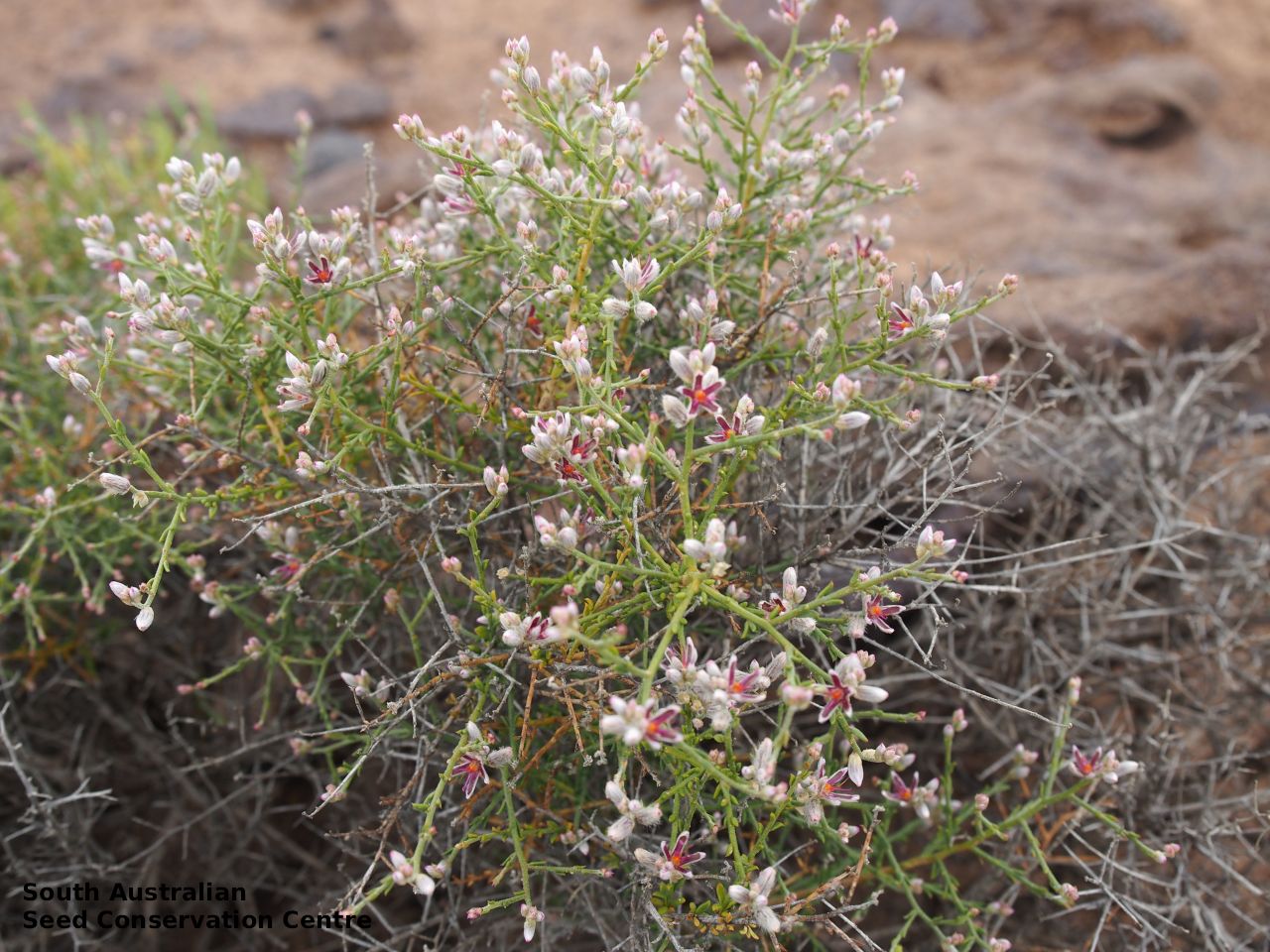
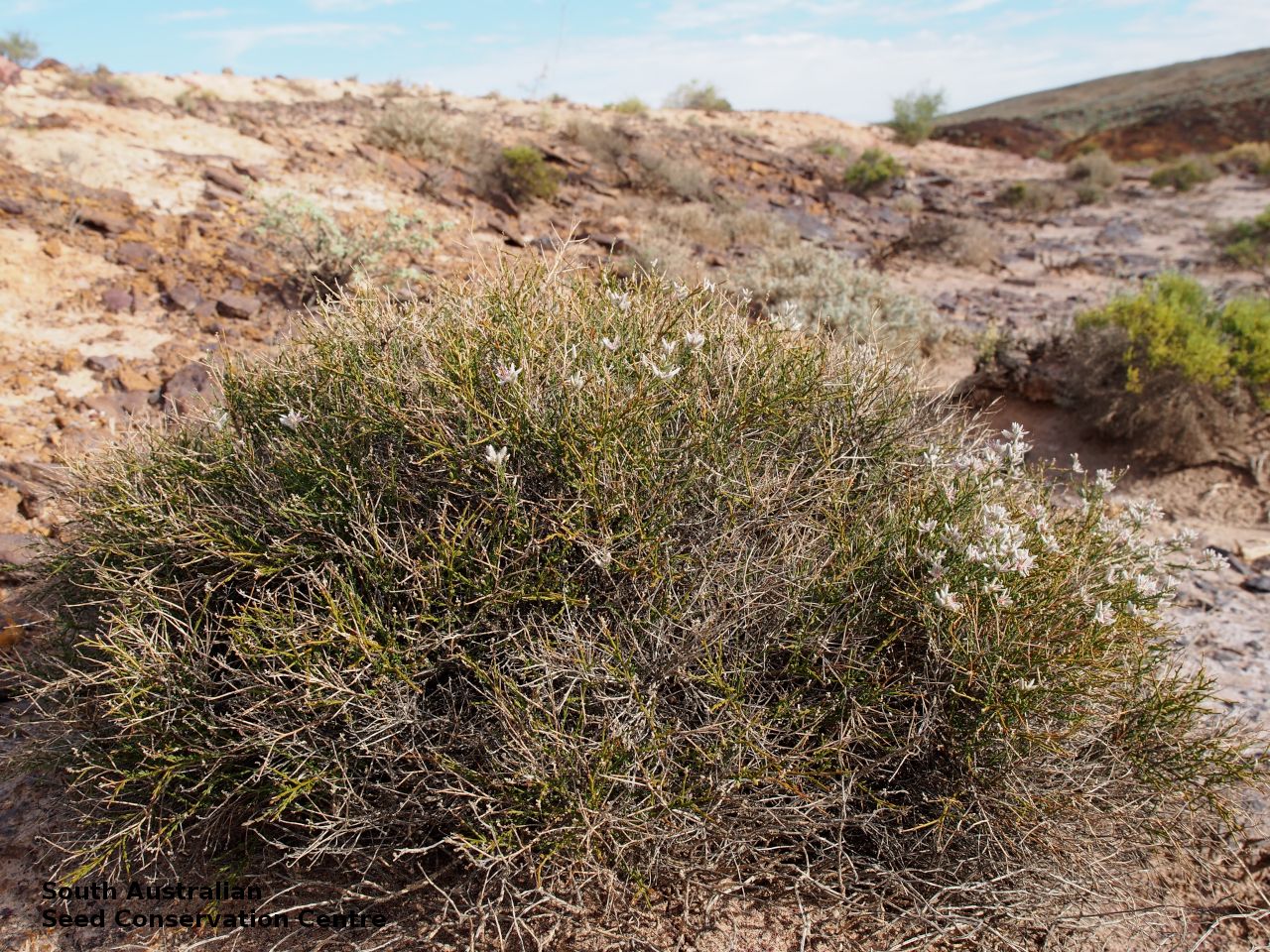
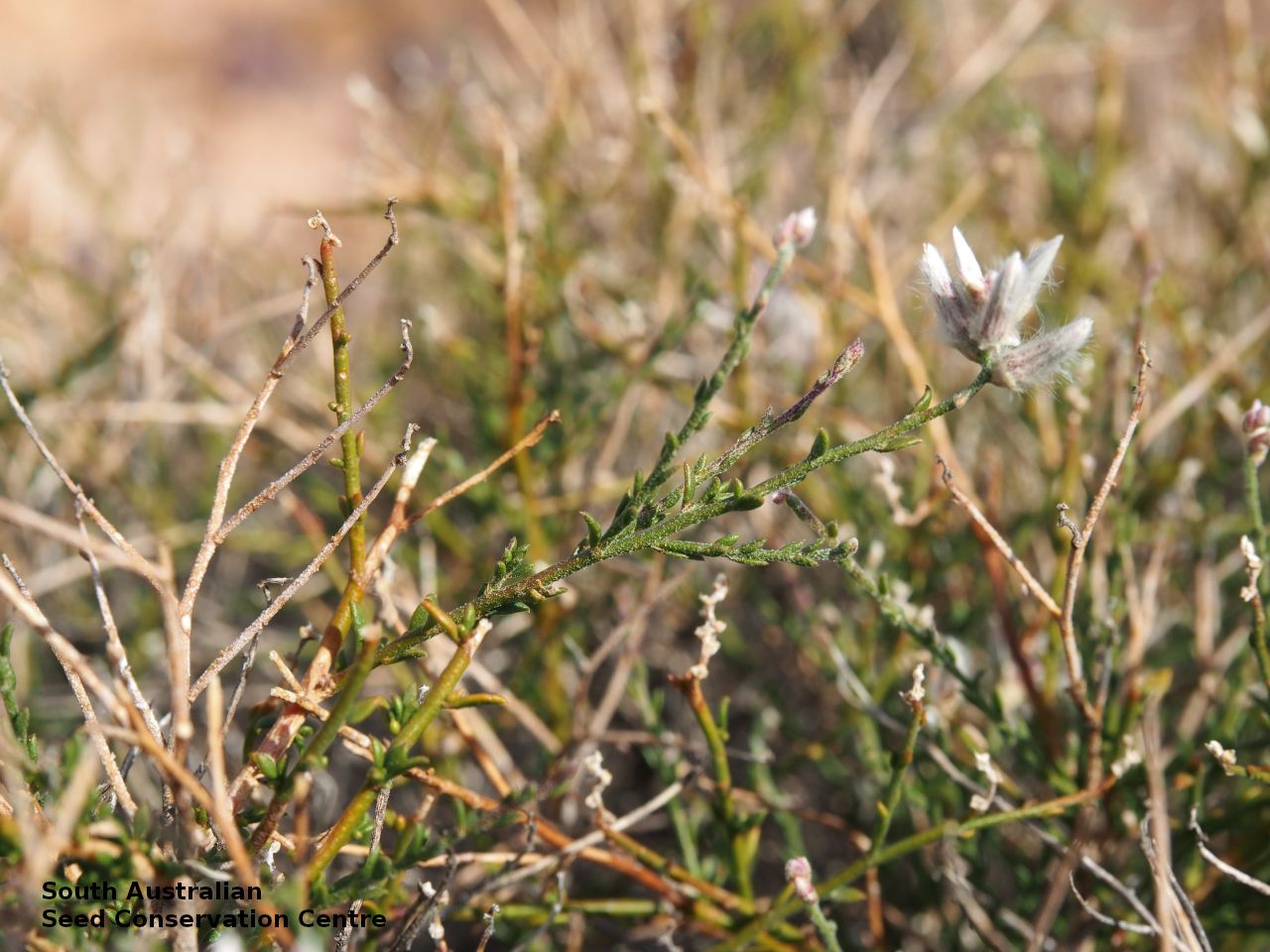
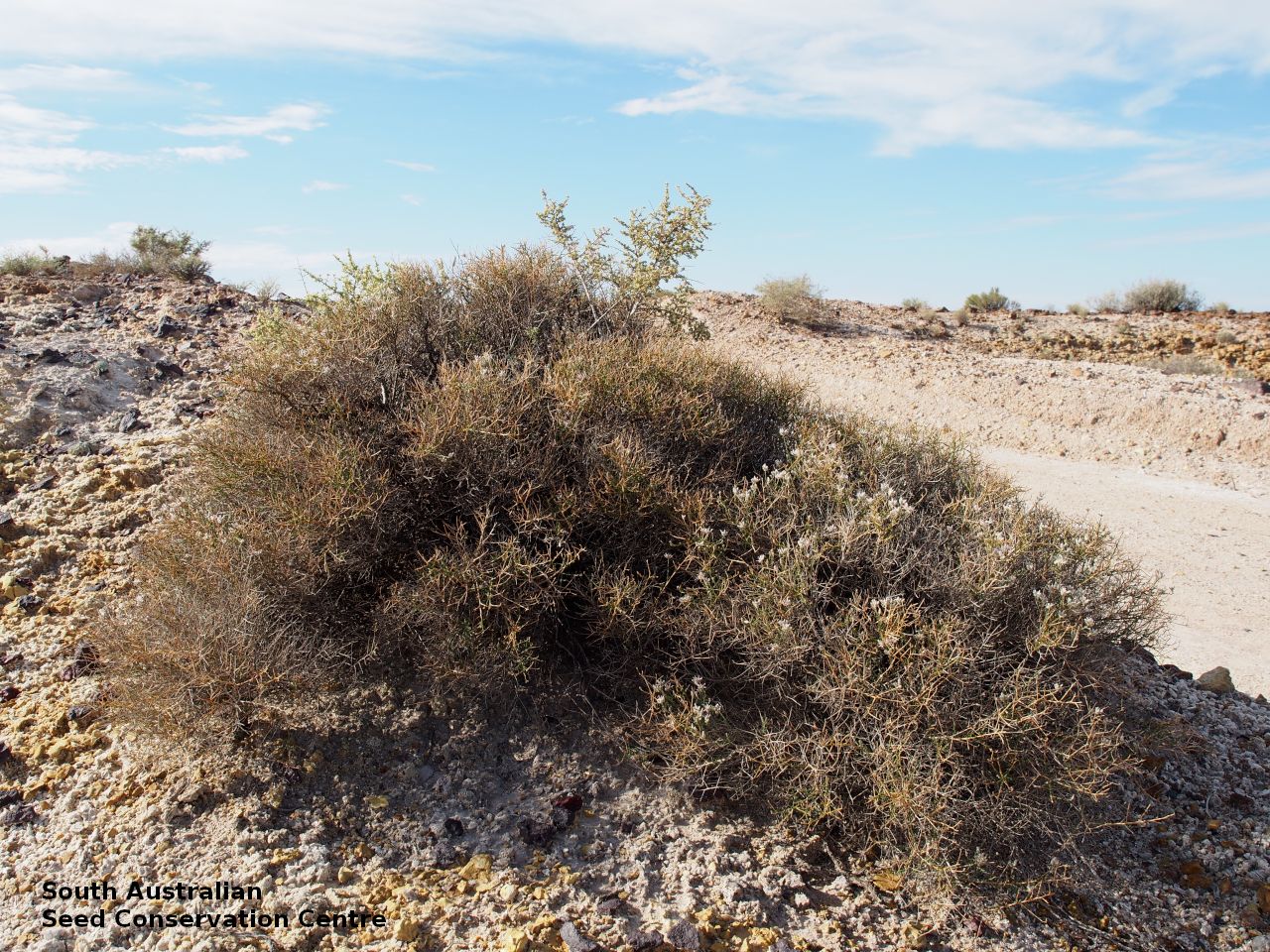
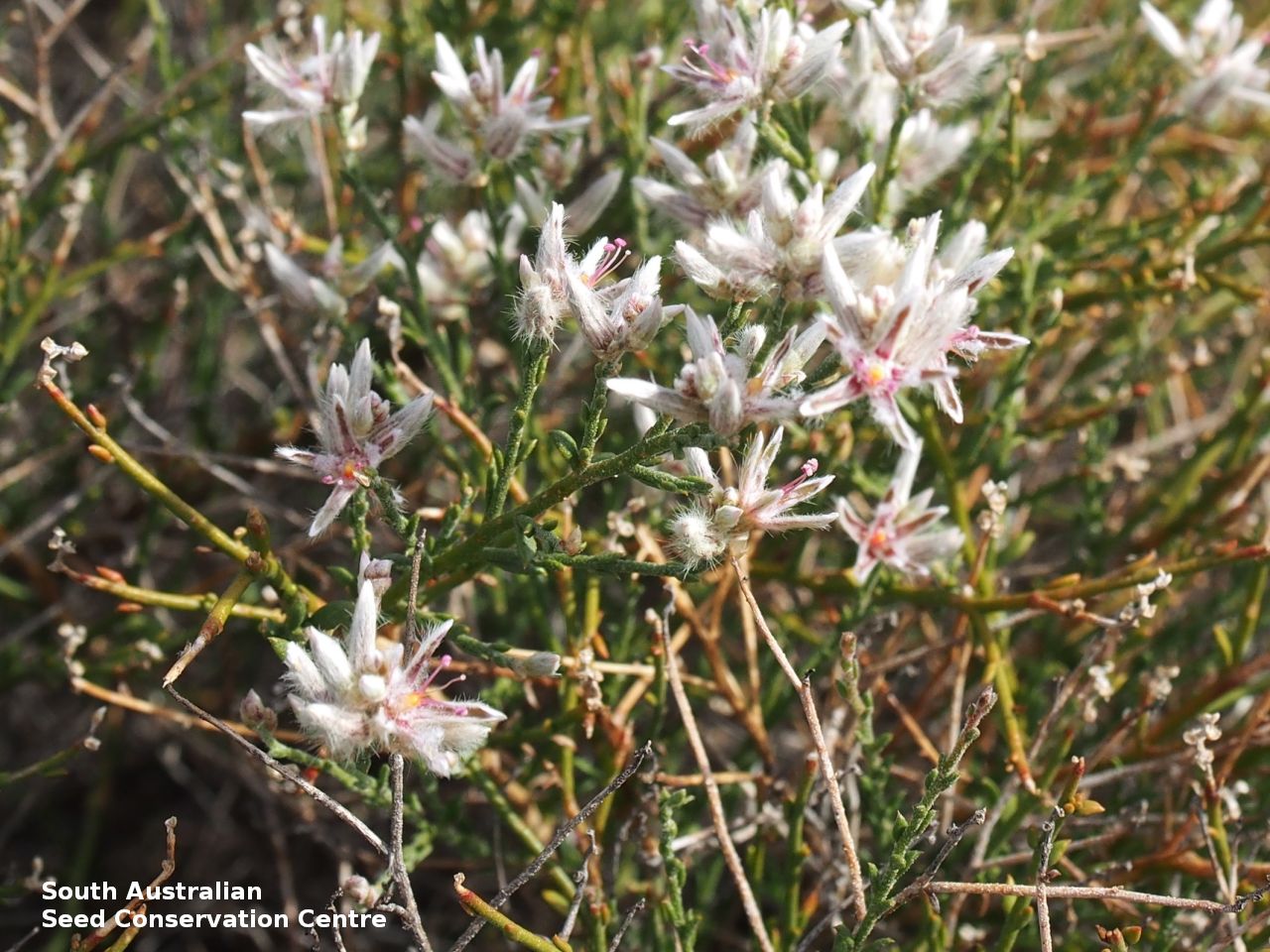
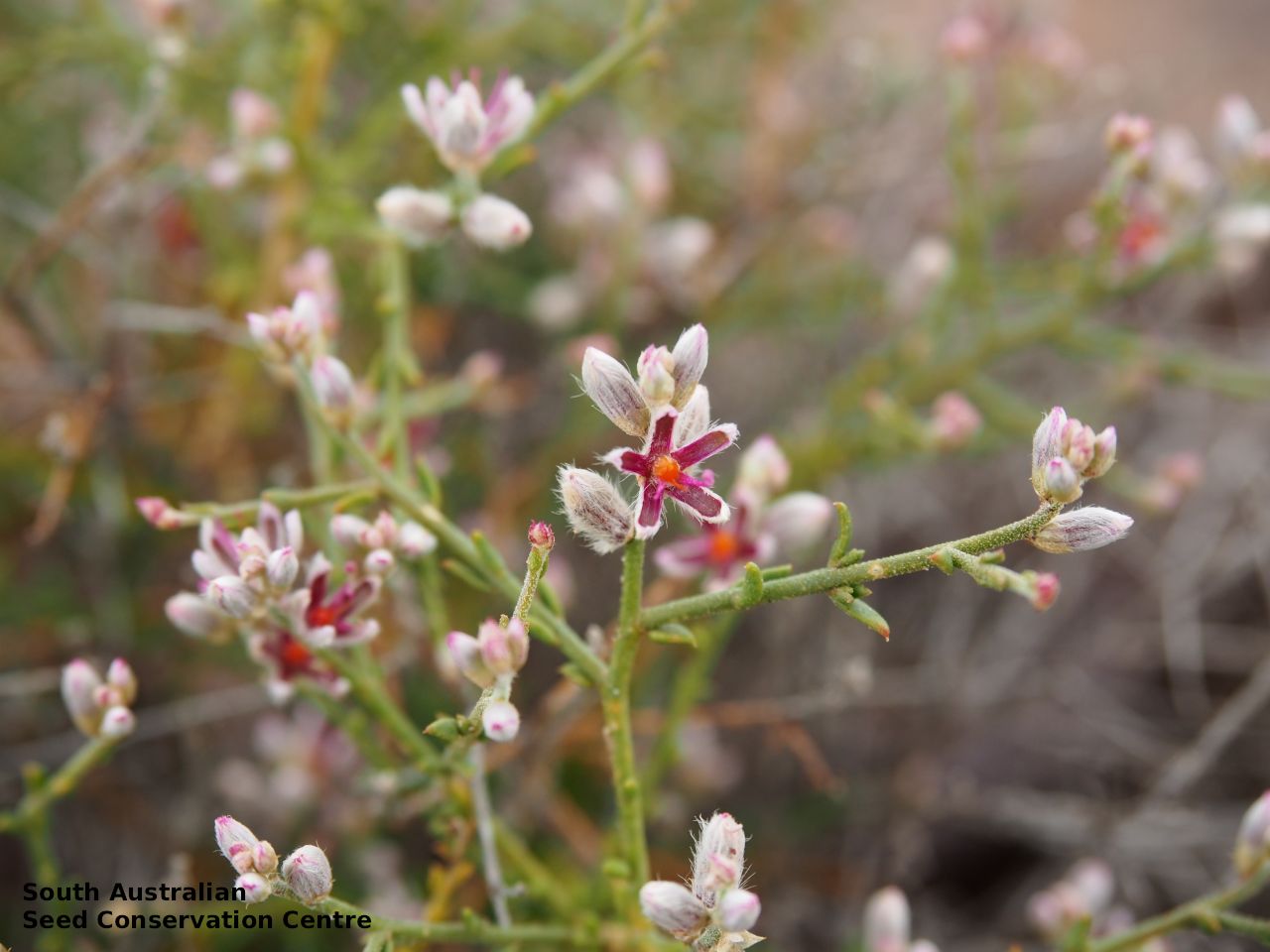

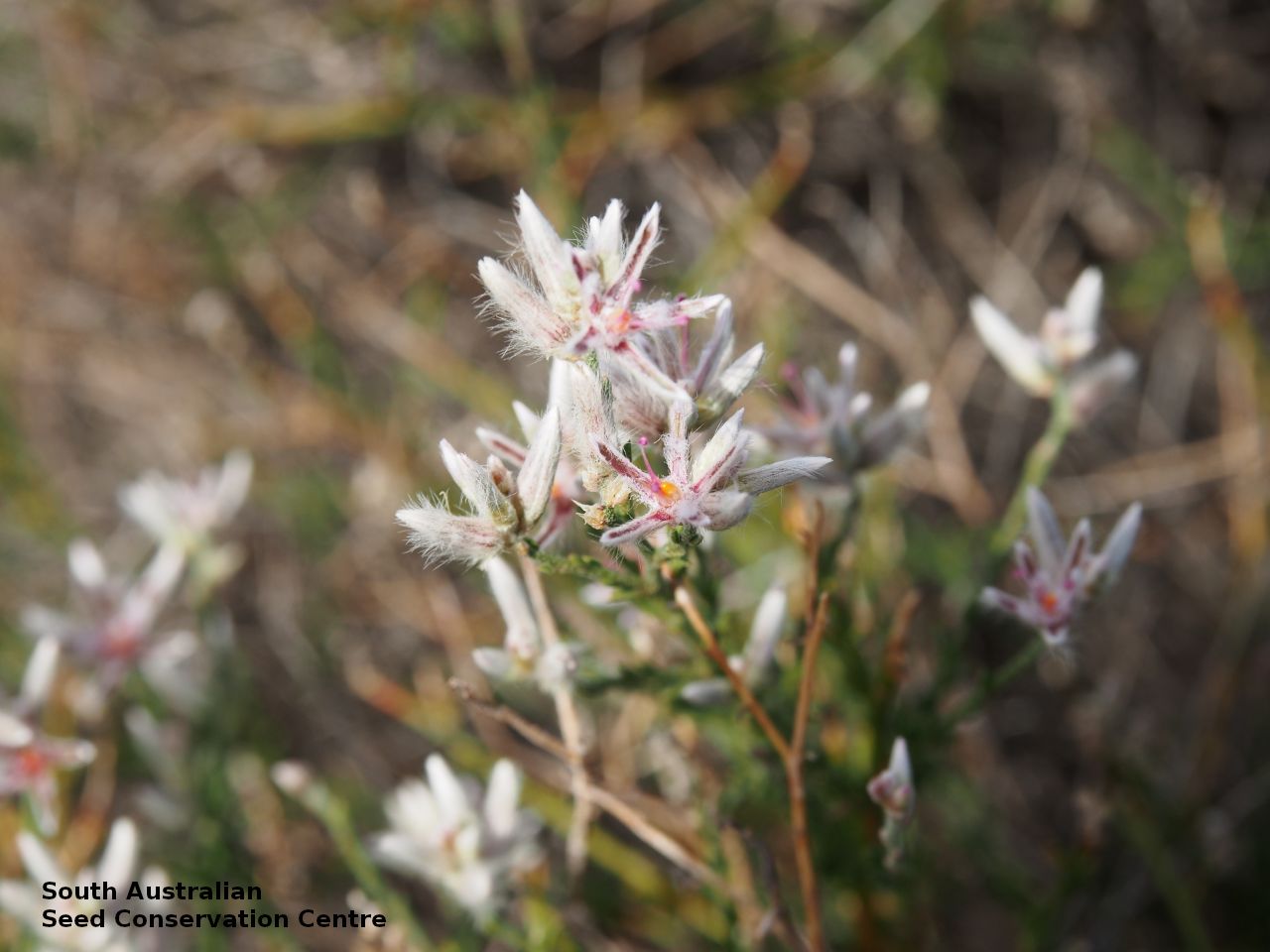
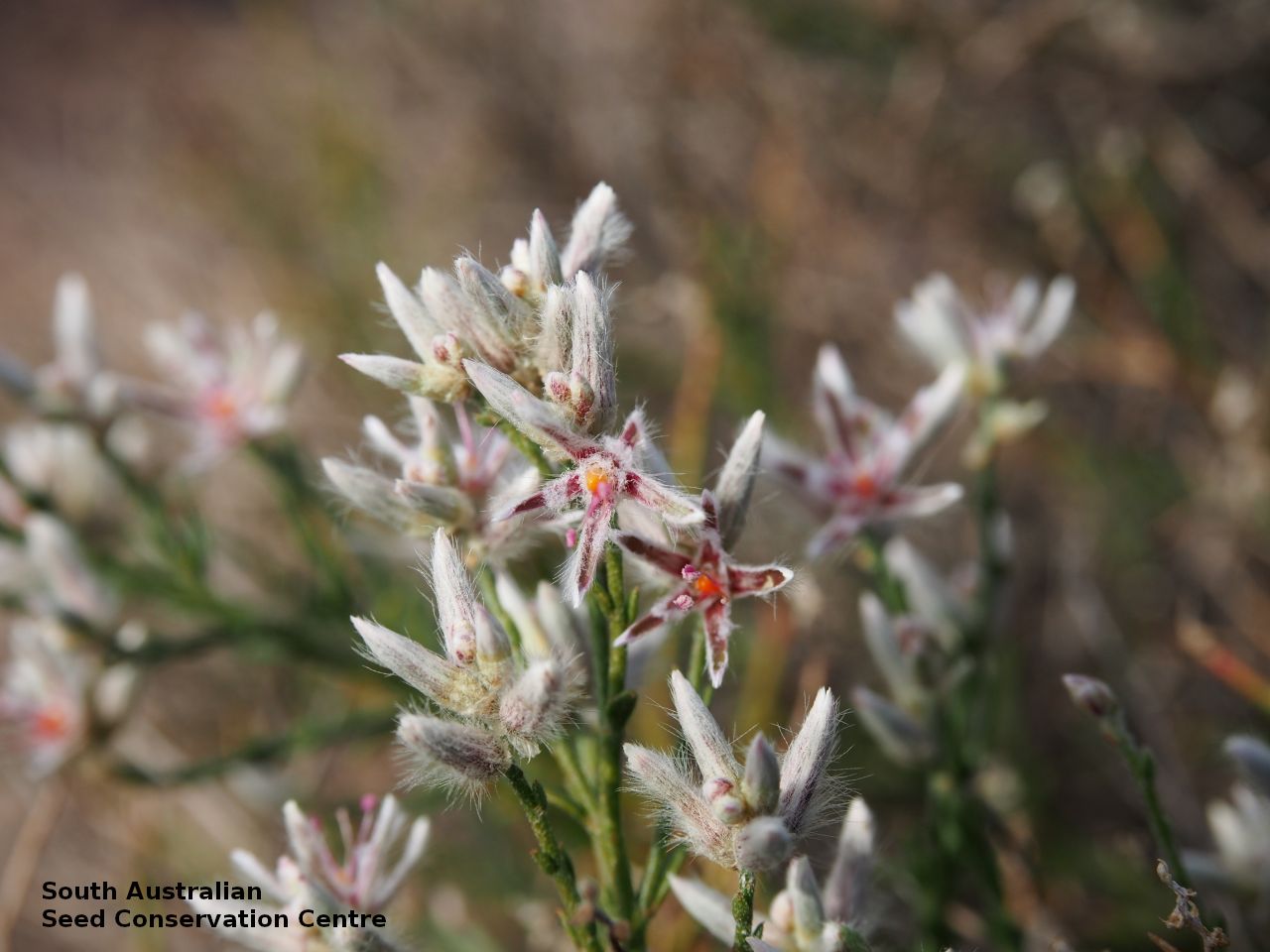
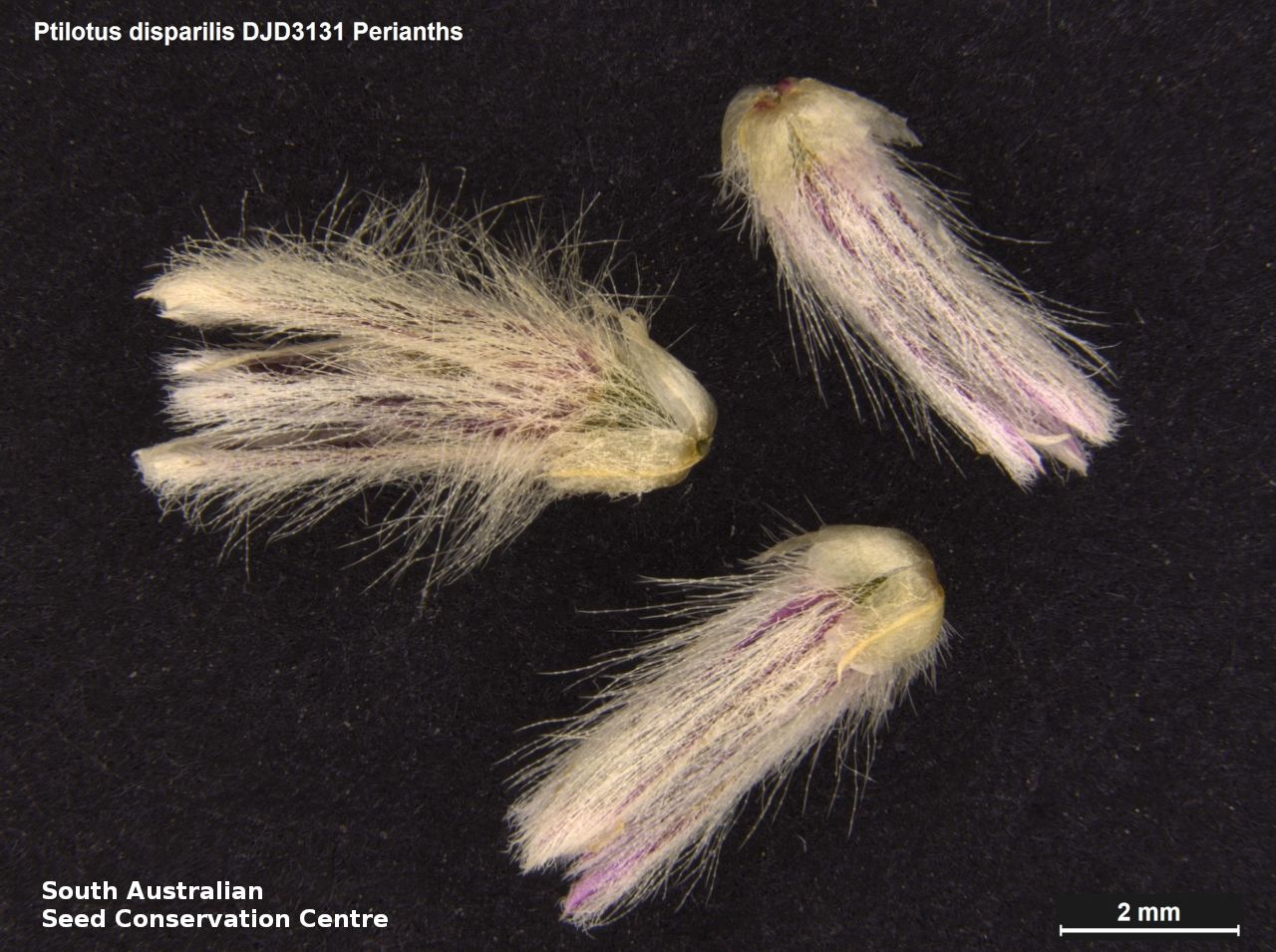
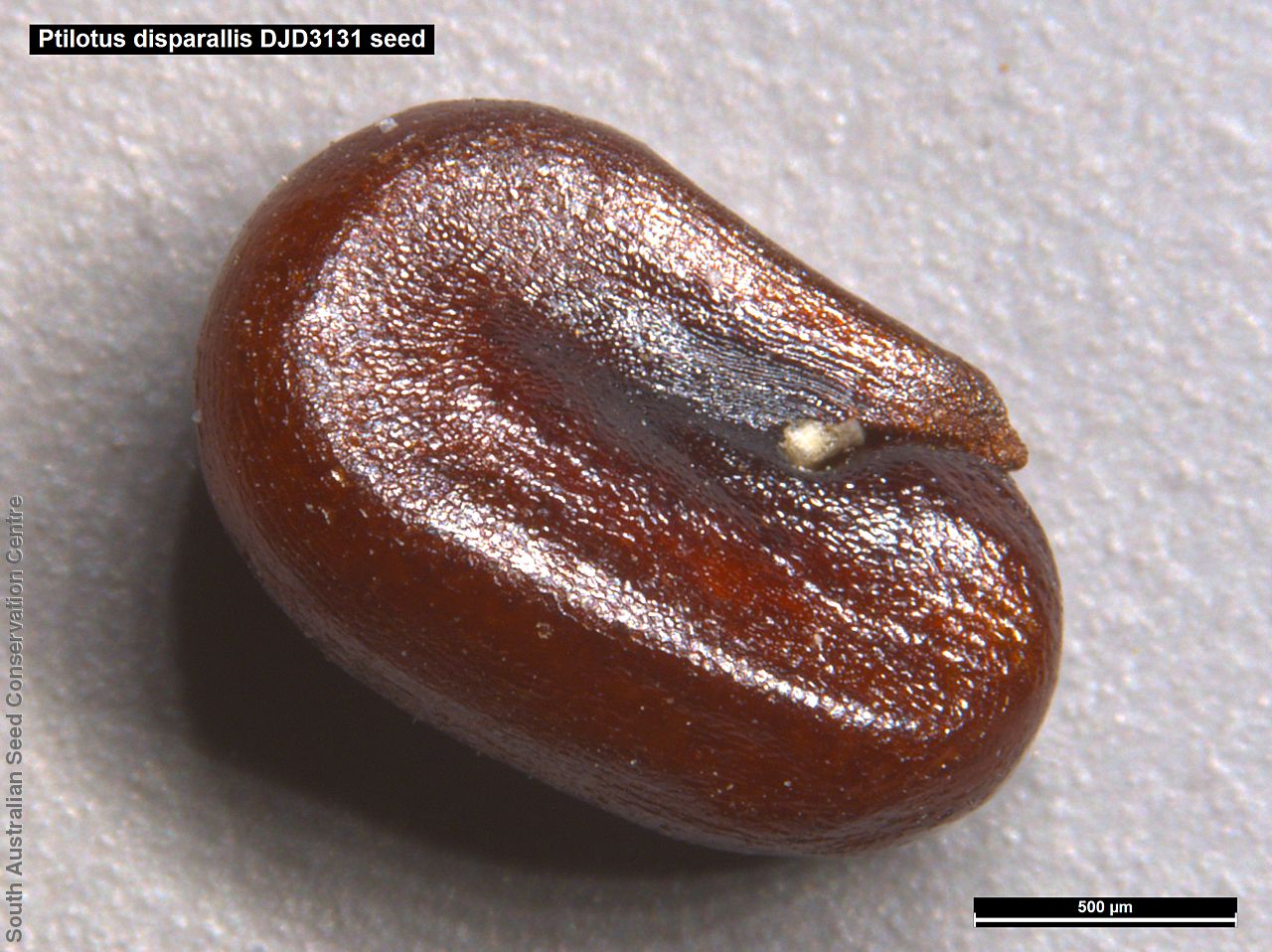
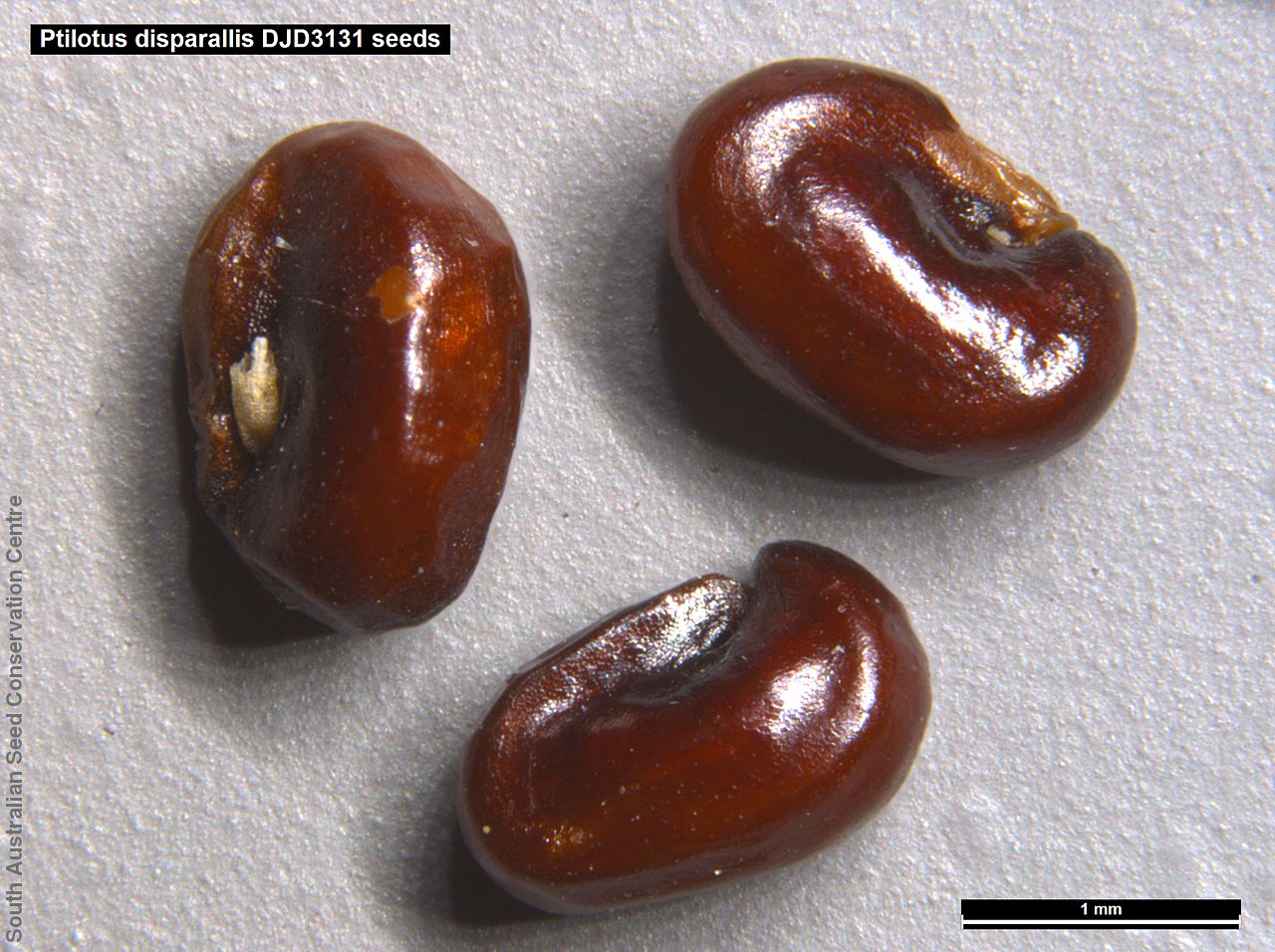


Prior names
Ptilotus parvifolius var. laetus, partly
Common names
Shrubby Fox-tail
Small-leaf Mulla Mulla
Etymology
Ptilotus from the Greek 'ptilotos' meaning feathered or winged; referring to the hairy flowers. Disparilis from the Latin 'disparilis' meaning dissimilar; referring to this species dissimilar floral morphology when compared to other taxa in this complex.
Distribution and status
Endemic to South Australia and found in a small area west of the northern Flinders Ranges, between Copley and Farina, growing in stony brown clay, on rises around saline depressions and podsol breakaways near mine tailings, in low shrubland of Tecticornia, Gunniopsis and Sclerolaena. Native. Very rare in South Australia.
Herbarium region: Flinders Ranges
AVH map: SA distribution map (external link)
Plant description
Intricately branched, strongly divaricate, spinescent shrub to 30 cm high with smooth young stems covered in dense hairs, older wood smooth. Leaves sessile to subsessile, narrowly obovate or elliptic or ovate, to 5.5 mm long and 1 mm wide, smooth, with sparse to moderately dense (on newer leaves) hairs, green. Flower-spike loose head with 5-8 flowers with perianth to 6.5 mm long, grey-white due to hairs, pinkish-purple underneath, tepals narrowly oblong, concave. Fruits are whitish head with a tinge of pink, containing a number of long papery and hairy fruits, each containing one seed. Seeds are red-brown, reniform to 2 mm long and 1.2 mm wide. Seed embryo type is peripheral.
Seed collection and propagation
Collect seeds between October and December. Be very careful when collecting this species as the fruits contain fine hairs that may cause an allergic reaction for some people. Collect the fruit heads when dried to a pale straw colour with a tinge of pink. Each fruit should come off the head easily when fingers are rubbed up the stem. Collect more fruits than required as not all fruits will have a viable seed. Be very careful when cleaning this species as the fruits contain fine hairs that may cause an allergic reaction for some people. To clean, rub the fruit heads gently to dislodge the seed at the base of each fruit. Use a sieve to separate the unwanted material. Store the seeds with a desiccant such as dried silica beads or dry rice, in an air tight container in a cool and dry place. Seed viability is usually high but seed availability tend to be low. Seeds are non-dormant, viable seed should germinate readily.